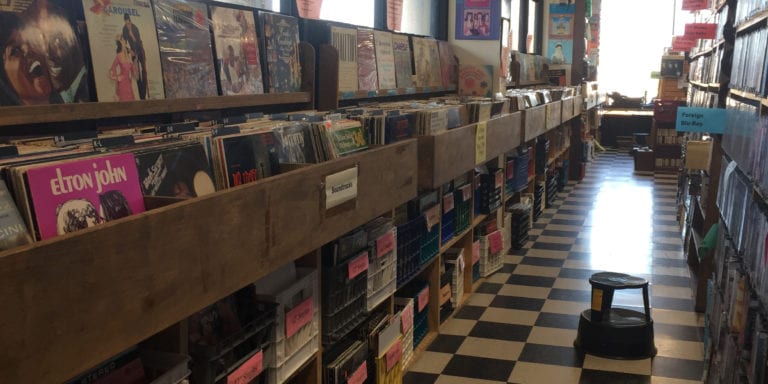
“What should we do with the record section?”
This became an annual question from the late 1990s until about 2008.
“I think we should get rid of them,”—that would be rationality and good business acumen speaking. I kept on keeping those thoughts inside.
My heart and sentimentality spoke aloud:
“Let’s give them another year.”
With whom was I speaking? Clark. Whose judgment in so many areas has made all the difference in Wonder Book not being a casualty of all the bookstore purges during that same era. We’d review all the different sections of the stores every January after printing out the annual sales figures broken down by category: mass market sales, used hardcover, new/remainder hardcover, new comics, used comics, “Special Used Books (collectibles $15 and up), video rentals, sidewalk book sales… We have about 50 categories we track in each store.
We would handicap each category seeing how they’d performed versus the previous year. We would also see if these categories “paid” for the space they took up. We pay rent by the “square foot.” Part of the equation was, “Does this category earn all the space it occupies?”
Did the record section at our Frederick store—the only store to stock records since the 90s—break even or lose money for the space it occupied? Yes and yes. That varied from year to year. They had been in decline and/or the doldrums for many years.
He was either mute on the subject of the vinyl section…
Or he would say, “Maybe they bring in people who are accompanied by people who buy other stuff.”
Or, “They don’t take up that much space.”
Or, “Maybe this year will be better.”
My annual reply went something like this:
“Ok. We’ll keep them another year. Just tell the buyers NEVER pay more than a dollar per box.”
No one else in the region was buying them at all. We had hundreds of boxes backing up in the warehouse. Still, I couldn’t turn them away. Storing them indefinitely was better than throwing them away. Most people were thrilled we would take them at all. And we did “take them all.”
So, the LP section held on at our flagship store every year—by its fingernails. But every year felt it could be its “swan song.” 🙂
And it was sentiment as much as anything that kept me from pulling the plug on them and using that space for something much more profitable—like DVDs.
They could be beautiful. And, records had been such an important part of my life since I was a toddler.
I had inherited an ancient, little turntable from my next oldest brother. It had a speaker built in. It looked kind of like this:
I’d play my little 45s over and over again. Some were pressed on colored vinyl—yellow, red…—as well black. With a turn of the dial, I could put on 33 rpms and even 78s. I’d inherited some 78s from my much older brothers. Tubby the Tuba, Little Orley and the Magic…
That “Record Player” also had an ancient, ceramic plug which had a piece chipped off. I recall vividly getting a nasty electrical shock one afternoon plugging it into the wall in my brother’s room.
When I got a little older, I began sneaking up to the garret on the third floor. That exotic set of rooms which were the prerogative of the oldest of the three brothers still living at home. The two older brothers had gone to the Naval Academy and Penn. It was Jimmie’s room then. He had a big stereo changer that could be closed up into a kind of suitcase with a handle. When in its place, the lid would open and two speakers fold out. They were triangular in shape and could even be detached. It was a two-tone thing. Half off pink and half dirty white. The “changer” meant I could stack albums—5, 6…or more at a time on the stainless steel spindle, and as one finished, the tone arm would rise and retract and the next album would drop onto the record that just finished playing on the turntable below. The tone arm would then magically rise, swing in, and drop precisely at the beginning of the next album. I’d sneak up there when he was at school or out with friends and girls (a lot.) I would pick out and listen to his grown-up albums like The Kingston Trio, Harry Belafonte, Odetta, Joan Baez… Many I had never heard of. If the cover looked cool, I’d try it out. If I like it, I’d play it over and over again. It looked kind of like this:
One day when I was 8 or 9, an odd looking album appeared up there with a scruffy kid on the cover—Bob Dylan.
I wasn’t sure if I liked his scratchy rough voice, but there was something compelling about the words he sang.
Then Jimmie was gone—mostly. Off to NYC to become a writer and musician. I wasn’t given that room, but I had free reign of it. Dad gave me a little allowance every Friday after dinner (if I’d behaved and done ok at school.) Plus I’d still scrounge the ditches and fields for returnable bottles and redeem them for pennies, nickels, and dimes.
Music was changing dramatically. The Beatles were on the Ed Sullivan Show. EVERYONE watched the “British Invasion.” A motorcade carrying The Dave Clark Five paraded down Main St in Amherst on the way to downtown Buffalo, NY. My friends and I joined the crowds lining the street to watch.
I began buying 45s of the various Top 10 hits I’d listen to on my little transistor radio—”Made in Japan.” WKBW. 1520 on the AM dial. It was really a “dial.”
The first record album I saved up and bought was Cher—All I Really Wanna Do. Don’t scoff—she was not the campy icon then. Much more folksy. Plus I thought she was beautiful with long, straight, black hair. The title song was by Dylan. She also covered Don’t Think Twice. The Bells of Rhymney was delightful as well.
The next album I could afford was The Byrds—Turn! Turn! Turn!—which gives me a bit of redemption, I hope.
Then my parents moved me from that established neighborhood with its tall, leafy elms lining the streets where so many houses were interesting architectural feats to the boom/waste land of 1960s Montgomery County, Maryland. Our new home was in a sprawling development where every third house was identical in almost every way, except color, to ours. The trees along the streets were all newly planting. Saplings two inches in diameter. The early teen years were a combination of nothing to do, nowhere to go, and the frenetic speed of growing up.
The very first day I could, I got a drivers license and a job. The very first job was packing books in a little mail order warehouse. It was an assembly line affair, and we’d pack the 20 volume The Illustrated Encyclopedia of the Animal Kingdom. We’d make sure one copy of each volume went in the boxes. We’d seal them, slap an address label on the box, and stack them near a loading dock for shipping.
Having a car I could sometimes use and a little money meant freedom to me.
I would often cash my paycheck and head to E. J. Korvette (did it really stand for Eight Jewish Korean Veterans?) or Waxie Maxie’s and flip through the record bins and calculate exactly how many I could buy.
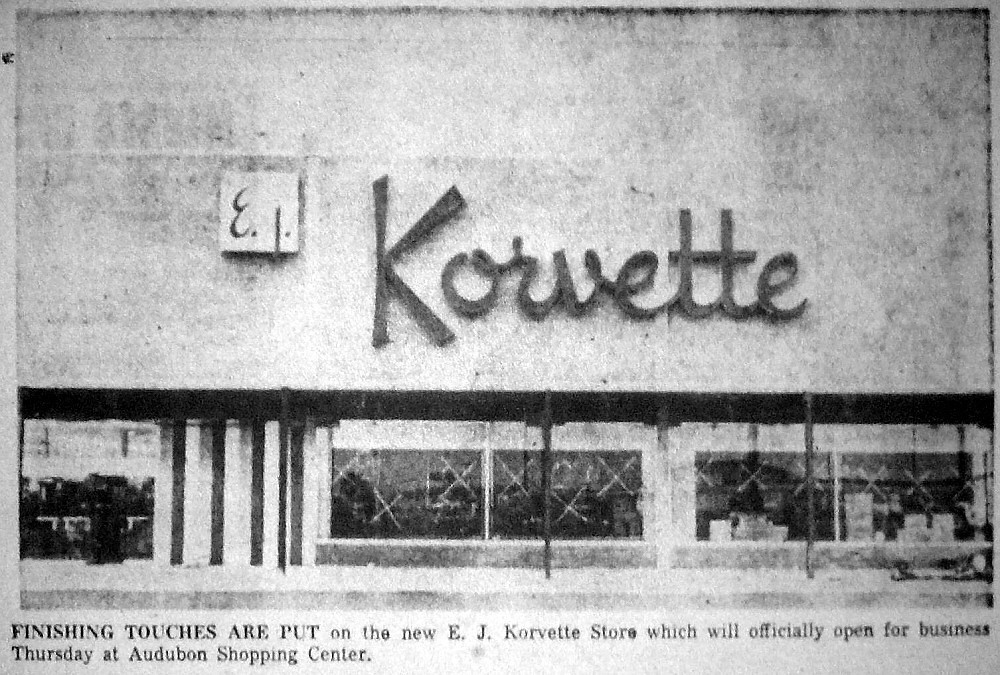
It is hard to convey the multidimensional magic of getting music the day it was released during that renaissance period.
I would be at Korvettes right after school on the street date if something important was coming out. I would go home with my package. I would slit the plastic wrapper and slide the inner sleeve out.
I would place the shiny black disk on the spindle and pull the switch that would cause the record to drop. I would turn the volume up, and when the needle hit the starter grooves, there would be that slight hiss. Then something new and wonderful would come out of the speakers. It could be: “I read the news today, oh boy. About a lucky man who made the grade…” Or “When you’re weary, feeling small. When tears are in your eyes, I’ll dry them all…” Or “With your mercury mouth in the missionary times, and your eyes like smoke and your prayers like rhymes…”
I would listen, reclining on my bed. My eyes closed. My hands clasped behind my head. My mind would go places I’d never gone before. New places. Places no one had gone before. Too quickly Side One would be over and the arm would lift and retract. I would repeat the bliss with Side Two. Then, when it was over, I would play it again. Despite warnings from audiophile friends that you should let the disk cool before you play it a second time. Sometimes I would repeat the second side first if something was particularly wonderful there. The second time around, I would study the cover art as I listened. Turning the album jacket over and over, I would study the images and absorb the words. Some album covers were so beautiful and creative. I’d read the liner notes and, if they were included, I would read the lyrics along with the song.
On the next Friday night or Saturday morning, I’d have a buddy over and we’d sit cross-legged on the floor and play the album. If a song was particularly cool, we’d sometimes get up and go over to lift the tone arm, set it down gently on the gap just before that song and replay it . I was pretty good at doing this, but it could still be risky. There was too often a horrible scratchy noise as I lifted the tone arm with a single finger. Then, when I tried to hit the wide groove between songs, I would often set it down with a loud pop. I could get really angry if it was my new album. I was sure I’d done permanent damage.
The music, the albums, the jackets—they all seemed so permanent then.
As I grew a little older, I became a devoted audiophile. I invested in the best turntables and tuners and amps and… I could afford. Garrard, Pioneer (speakers), Bang and Olufsen… I’d frequent places like Dixie Hi-Fi (which became Circuit City.)
My record collection grew and grew. I sought out more exotic record sellers and resellers near The University of Maryland or down in Georgetown in DC.
Then I went away to college in Connecticut, and the first thing I did was set up my stereo in my dorm room.
One time on the first beautiful spring day, I put my speakers in my dorm room window facing out onto the Quad and cranked up the soundtrack to The Wizard of Oz. Soon kids were dancing and cavorting on the Green. Soon there was a call from the administration to my dorm’s “housefellow” to tell me to turn it off.
I still bought LPs whenever I could. I was building a “collection.” It was an “investment.”
Flash forward to 1980 when I took the leap of faith and opened my first bookstore.
Of course, there would be a record section. The initial stock was some of my own LPs. It wasn’t completely selfless. When I began buying records, I would get first crack at the new arrivals.
And the records were a strong point of revenue.
There were problems. I recall a pair of chubby guys. I called them the “Burp Brothers.” They scammed us a number of times. They would buy an LP and then return it saying it was damaged. After the first few times—or was it more?—we caught onto their scheme. They’d buy our good copy and return their beat LP in the jacket they’d bought from us.
Then a new technology appeared in 1982-83. Compact discs. Word was the sound was perfect and they wouldn’t wear out.
I saved some money and bought a CD player and few budget discs in cardboard sleeves. I can vividly recall sitting on the floor in the den in the old, stone farmhouse I owned on the Mason Dixon Line south of Gettysburg.
I hooked up the new device to my existing amplifier. I put on my Koss headphones and pushed “Play.” It was Pachelbel’s Canon. Tears rolled down my cheeks. The sound was so pure and clean. No hisses or pops that even the best stereo equipment couldn’t hide.
I never looked back. I’d still play my LPs if I didn’t have a CD replacement yet or if the album didn’t yet exist on CD. I began “investing” in a Compact Discs collection. (Do you see a trend here of poor investments?)
I began selling off my LPs in the store. Everything eventually went but 50-60 core LPs with sentimental value.
I’d make pilgrimages with employees to Tower Records near Foggy Bottom in DC. I’d blow lots of money every trip.
In the Wonder Book store, the turntable was sold off and we began playing CDs to create the proper ambiance.
It wasn’t only that the sound was crystal clear…you didn’t have to turn the disc over. Both sides of the “album” were on one side of the CD. You could skip around picking and choosing songs with a remote. You could repeat one, some, or the whole album with just the push of a button.
But there was still a void in this new technology.
What I missed most was the cover art and liner notes. CD jewel cases were so small. They were like postage stamps compared to LPs.
At one point, Neil Young famously said, “Listening to a CD is like looking at the world through a screen window.”
Ok. But I still remembered the hissing and pops and that vinyl discs would sound appreciably worse each time they were played. No matter how much you spent on a tone arm and stylus—and a stylus could cost a fortune back then.
Ummm… Screens on windows keep the bugs out.
STILL I was sentimentally attached to the vinyl record. And they continued to sell well…for a while.
Then began their long slide and decline into “profitless land.” It was becoming an obsolete medium. Aging guys with long, gray ponytails would occasionally come in and flip through the LP bins. On the other hand, folks would drive up with deceased Uncle Harry’s 20 boxes of LPs weighing down their station wagon until the back end was riding on the axle. And so often it was not just Uncle Harry’s LPs becoming obsolete—the music he’d listened to his whole life was as well. Mantovani, Harry James, Fred Waring and the Pennsylvanians… We always got 100 copies of those albums for every one we could resell.
Guy Lombardo had ushered in New Years’ Eve in New York City for decades, and he’d only stopped when he passed away in 1977. But by most, he was long forgotten by the 90s.
Soon that annual question began coming up.
“Should we discontinue the record section?”
Change is hard. Pulling the plug on anything is hard. In the home I moved into in 1990, the turntable is STILL prominently showcased on top of the glassed-in cabinet of the stereo system. But it hasn’t spun a disc in many years. It is still there to this day. There’s usually a little stack of books atop the turntable cover.
An icon to the past.
Then around 2007 or 2008, there began a little buzz. The Hagerstown store manager, Bonnie, asked, “Can we start selling LPs?”
“Don’t be ridiculous,” spoke the wise President, CEO, Chief Cook, and Bottle Washer. “They’re just a pain in the butt in the Frederick store. They’re not worth the space and trouble.”
About then Jeff, a data entry whiz and assistant manager at the Internet warehouse, suggested, “We should start selling records on WonderBook.com.”
I remembered the fraud of the Burp Brothers as well as all the legitimate returns and complaints about LPs that looked fine but whose buyers insisted the skipped or…
“Nah. Too much trouble. Paying for all the returns would offset any sales we’d make. Even of the exotic stuff.”
One evening after going down to DC for dinner, I wandered into Urban Outfitters. They were selling turntables ?! Prominently?! And they were stocking new pressings of vinyl records?!
Confusing!
Then, the sales of LPs at the Frederick store started showing double-digit growth every month compared to the same month a year ago. Growth in sales will always catch my eye.
Plus they didn’t cost much—obviously.
In my infinite, if usually tardy, wisdom, I agreed to start putting LPs on the website. I finally acquiesced and began sending LPs to the Hagerstown and Gaithersburg stores.
Boom! Or rather “boomlet.”
Nothing else at the stores were on a regular monthly upswing, so I begin messing with the raw LPs myself. It was fun. Brought back old memories. It was a diversion from what I’d done every day so long. And, occasionally, there were exciting surprises.
BOOM!
Triple-digit growth.
I called in a contractor, and we ripped out a wall of VHS and dollar bookcases at the Frederick store. Windows that had been covered by floor to ceiling bookcases came down. The black painted windows were scraped clean. We could now see Toys R Us to the west—just across the parking lot—for the first time in 20 years. The contractor built wooden flip bins nearly the length of the store. Beneath the flip bins were “bookcases” built just right so they could hold plastic milk crates of LPs.
At the warehouse, more and more LPs appeared up in shipping. Oddly, the French were among the best customers. Shipping hundreds of record albums to Europe. Unbelievable!
BOOM!
We expanded the LPs sections dramatically in Hagerstown. I converted an entire room in the boutiquey Gaithersburg store into a “Record Room.”
I began spending more and more of my time sorting the records: “Junk,” “Stores,” “Internet.”
I’d toss those bound for the stores into Bankers Boxes with price points like $2.94, $4.94…and up.
Why me alone? No one else here had been a record collector. My LP collection tastes had run from Rock to Rock Opera to Opera to Folk to Celtic/Folk to spoken word to… Plus I’d sold them in the “old days” and knew what moved and what didn’t.
So, this story has a happy ending for thousands and thousands of record albums.
The new clientele are young and hip “kids.” Retro.
I’m happy for them. They get to experience the big size and sound and shape of 12-inch discs and jackets.
Will I try to see if my old turntable stills works? I think I disconnected it when I installed a complex Equalizer years ago. Oh, how I hated fiddling with those wires and cords and jacks.
I dunno. Maybe…if only to see what the excitement is all about. And to see if I can tell the difference.
AND to see if it still as much fun as it used to be.

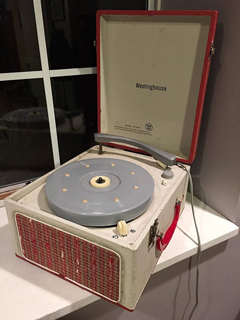

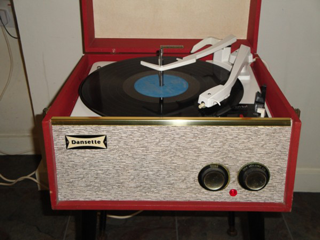
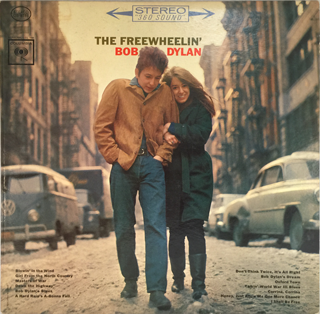
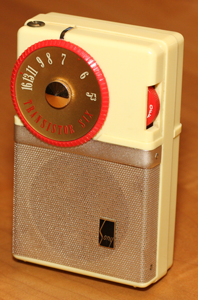
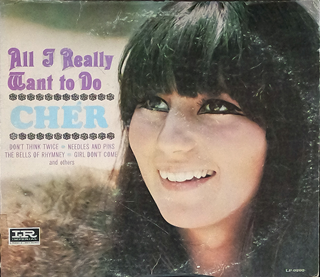
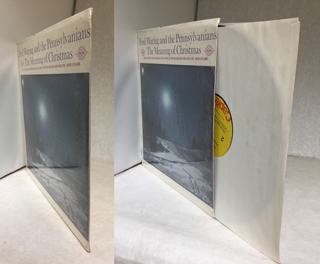
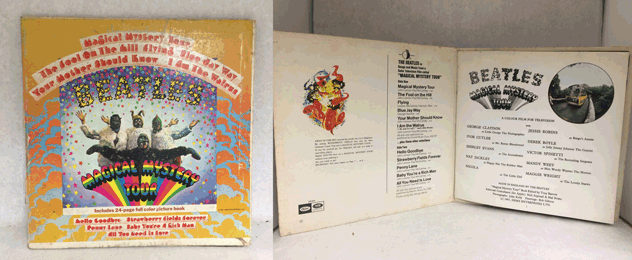
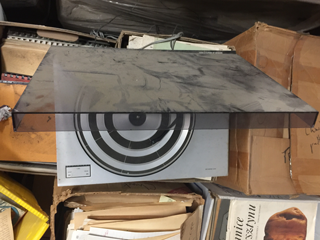
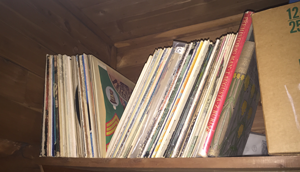
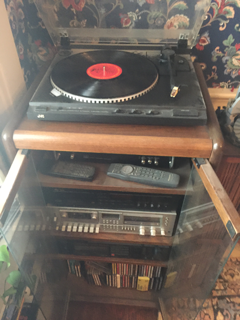
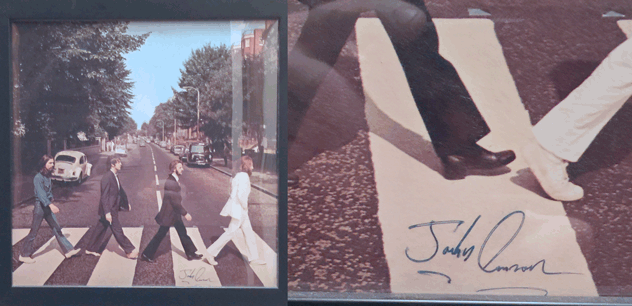
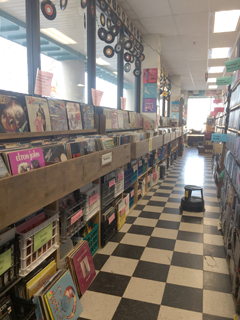

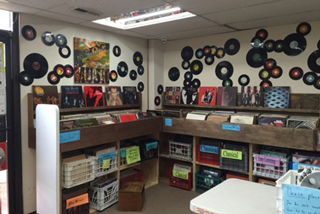
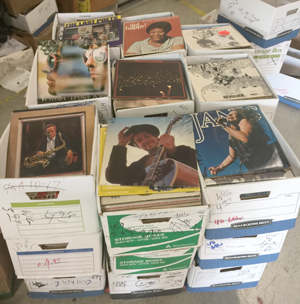

There are no comments to display.